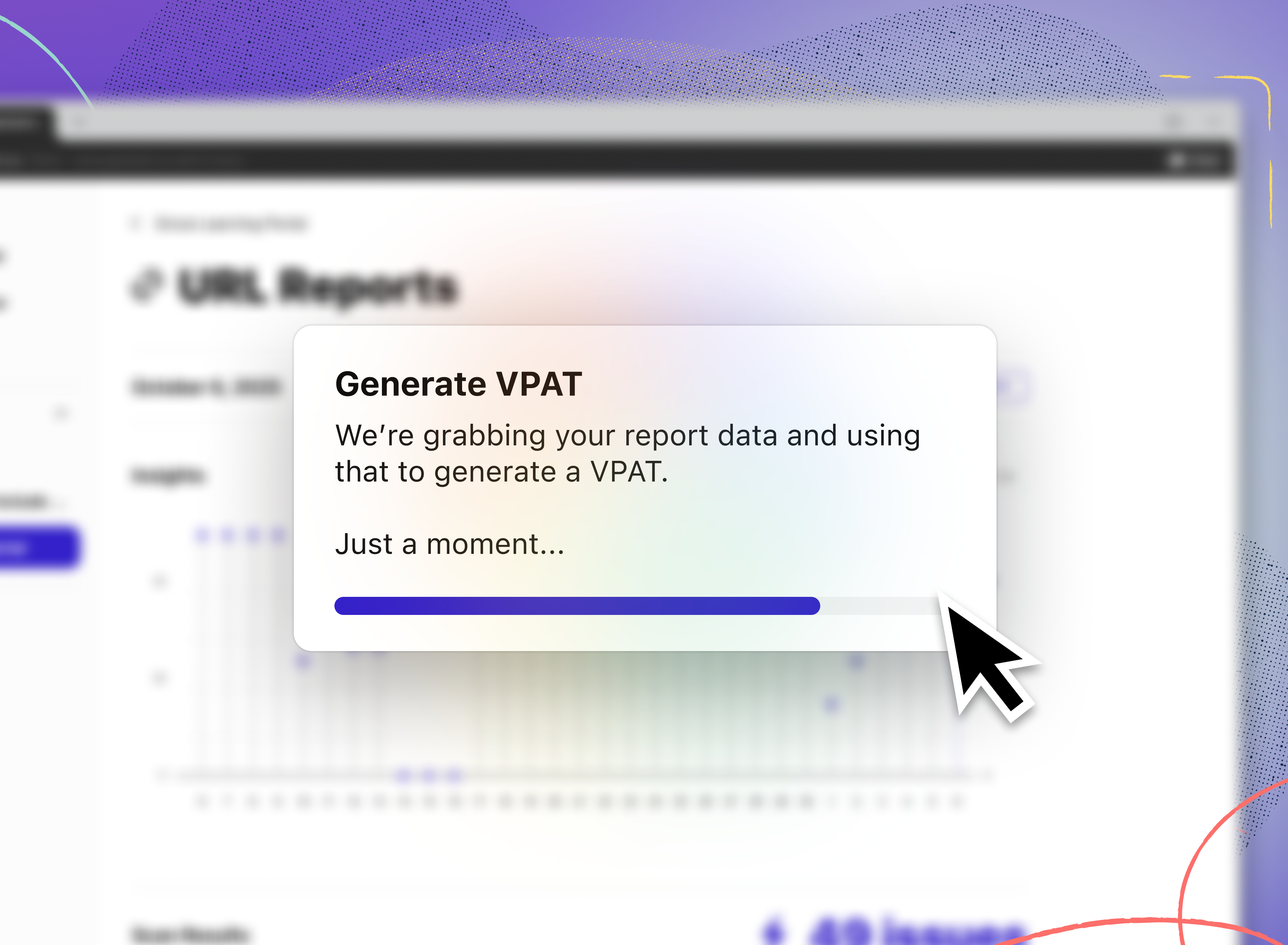Introducing Auto-Generated VPATs: Simplified process, massive time and money saved
Auto-Generated VPATs eliminate weeks to months of manual, time-consuming, and expensive processes by instantly producing industry-standard VPAT reports directly from your accessibility work—enabling you to prove compliance, accelerate sales, and/or stay ahead of regulations.

Team Stark
Oct 06, 2025

For any organization selling software in certain markets and locations, accessibility isn’t optional—it’s a requirement. More than ever now we’ve seen a rise in customers, procurement teams, and regulators all expect clear proof that your product meets accessibility standards. Procurement teams everywhere are adding accessibility checks to their due diligence and companies who don’t have VPATs1 (Voluntary Product Accessibility Template) ready risk slowing down sales cycles—or losing deals outright.
The problem? Well, if you’ve ever needed to complete a VPAT then you’re already going through a laundry list of things you loathe about the process. Creating them has historically been “painful” — a complex, manual, and expensive process to say the least — meaning companies paying 6-figures for a number of external consultants, long periods of work specifically to this task, and mountains of spreadsheets that come with it.
And VPATs require not just a list of issues, but clear explanations, structured reporting, and more. Today, in a first of its kind for the accessibility industry, that changes with Stark’s new Auto-Generated VPATs for your projects.
We built this feature to eliminate the barriers between accessibility work and accessibility reporting. And because of the continuous nature of Stark’s platform, your VPATs update and can be generated as your product evolves and improves. No more outdated PDFs floating around, no more outdated spreadsheets, and gone are the massive expenses of delivering a VPAT.
How Stark’s Auto-Generated VPAT works
As always, we at Stark aim to take extremely convoluted accessibility tasks and streamline them for you. To generate a VPAT, simply:
-
Navigate to a project - Determine which project you need a VPAT for and click on the URL asset. Remember: whatever product your customers engage with is what you need a VPAT on. To start, we’re running them on the URL asset.
-
Determine conformance level - Choose the framework and conformance level you’re needing to adhere to (e.g. WCAG 2.2). Stark will handle the mapping and document building.
-
One-click to generate - From the public facing URL asset[s] already inside your Stark project[s], Stark generates a VPAT in the latest ITI format.
Voila! What used to take weeks of external consultant hours now happens instantly inside your accessibility platform.
Isn’t this just a US thing?
Not at all. VPATs originated in the US and are the format required for demonstrating Section 508 compliance, but they’ve become the global lingua franca for accessibility reporting.
-
US: Government agencies and many enterprises expect VPATs/ACRs in procurement. FedRAMP vendors must have them, but they’re not limited to FedRAMP use cases.
-
Non-US companies selling in the US: If you want to sell into US markets, you’ll almost certainly be asked for a VPAT.
-
Europe & Canada: VPATs now include mappings to EN 301 549 and WCAG 2.2, which makes them equally relevant for EU and Canadian accessibility requirements. Many global enterprises have standardized on VPATs for vendor assessments, regardless of geography.
In short: VPATs aren’t just a US requirement—they’re quickly becoming the default, globally recognized format for proving accessibility compliance.
A note on where we’re headed
This is v1 of Auto-Generated VPATs. We consider this as just the beginning of making accessibility reporting faster, more reliable, and more affordable to teams of any size. As more non-developers take on accessibility responsibilities—whether in compliance, product, or sales—tools like this help them generate the documentation they need without bottlenecks and ensure they don’t create them for the sales team.
Our north star is simple: if you’ve done the work, you should be able to prove it, and you shouldn’t need months of wrangling and exorbitant fees to get there.
1A VPAT (Voluntary Product Accessibility Template) is the industry-standard document format that communicates how your product conforms to accessibility standards like WCAG 2.2, Section 508, and the EN 301 549 criteria. They’re not just "paperwork", they’re the key artifact procurement teams request when evaluating whether your product can be used by individuals with disabilities.
💬 What are some other areas that would streamline the process of VPAT creation for you? Share your thoughts and feedback at support@getstark.co, or join the conversations in our Stark Slack Community, on LinkedIn, and on Twitter.